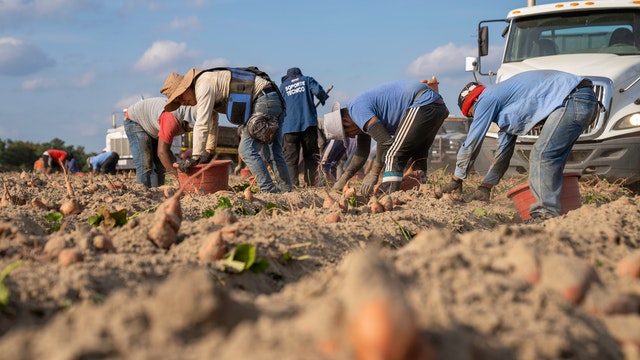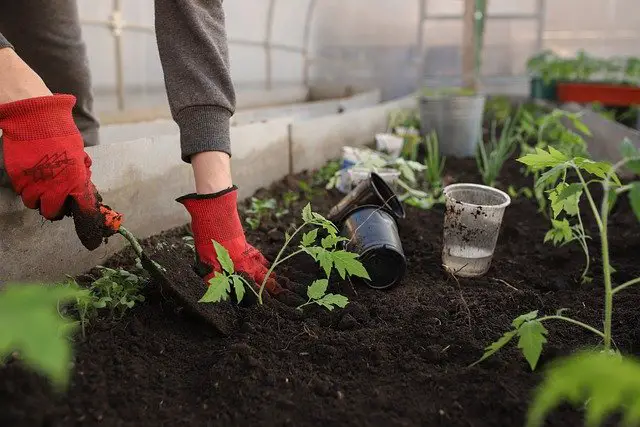The popularity of raised beds is growing. By cultivating your soil on a raised bed, you can ensure that it is always of the highest quality. With a correctly raised bed, you can keep weeds at bay for an extended length of time. While some are made of wood, others are made of brick or rock.
Not only do raised beds provide a more controlled and efficient way to grow your plants, they also add a visually appealing element to your garden that can complement any landscaping design.
Recently, galvanized steel raised beds are gaining popularity among many gardeners. So, is galvanized steel safe for garden beds?? Here are all the details you need to know about galvanized steel beds, its uses and many more interesting facts.
Is Galvanized Steel Safe For Garden Beds?

They are safe for use in your garden. Galvanized steel has a zinc coating that is only degraded by acidity, and because the majority of garden soils are neutral, the influence is small. In addition, zinc, a vital element for plants, is also found in the ground.
The Environmental Impact
It’s essential to consider the environmental impact of using galvanized steel in garden beds. While galvanization provides excellent protection against rust and corrosion, the process itself can have environmental implications.
The production of galvanized steel involves the use of energy and resources, including zinc and water. Additionally, the disposal of galvanized steel products at the end of their lifespan should be done responsibly to minimize environmental harm.
To mitigate the environmental impact, it is advisable to choose galvanized steel products that have undergone sustainable manufacturing processes. Look for manufacturers that prioritize resource efficiency, recycling, and responsible waste management.
Furthermore, consider the longevity of galvanized steel beds as a sustainable option compared to materials that require frequent replacement.
Galvanized Steel: What Is It?

Galvanization is a technique that coats steel or other ferrous metals such as iron with zinc. Steel or iron that has been exposed to moisture will not rust during this operation.
The vast majority of galvanized steel is produced using hot-dip galvanizing. As a result, sheet steel will be wholly submerged in molten zinc, whether corrugated or smooth.
As a result, the steel surface is covered in a homogeneous layer of soft metal. For ensuring perfect adhesion of the substance, the metal is sometimes cooled and re-dipped for a second coat.
In its most basic form, galvanized steel is not always zinc-coated. Occasionally, galvanized metal is heated and alloyed. Aluzinc, a coating comprised of aluminum and zinc, is often used in hot-dip galvanizing. Aluminum acts as an external layer, preventing moisture damage to the zinc and steel.
Galvanized Steel: What Is Its Purpose?
If you’re wondering about galvanized steel applications, you should inquire. Watering troughs, grain silos, and water storage tanks with galvanized steel exteriors are the most common uses for galvanized steel.
Additionally, shed building, roofing, gutters, and downspouts may all be accomplished with this material. As a result, it is often employed in sturdy fence panels.
For a long time, galvanized steel water pipes were the industry standard. Although galvanized pipes have been phased out favoring PVC and copper, many houses retain galvanized fittings. Galvanized will stay in good condition for years as long as the zinc coating is intact.
Galvanized steel is more often seen in food storage containers than kitchen equipment. This is because zinc may contaminate food and the environment when cooked to high temperatures.
As such, Galvanized is not recommended for use in the kitchen. Galvanized steel containers, on the other hand, make fantastic storage containers!
Can Galvanized Steel Be Used To Construct Raised Beds?

Absolutely! Galvanized metal raised beds are becoming increasingly popular among gardeners. Unlike wood, they are resilient to damage, do not degrade, and have a long life. Additionally, they are visually appealing and may evoke rancher or industrial vibes.
No matter what Mother Nature throws at it, a galvanized planter will not swell or shrink, and it requires no oiling or painting to maintain its appearance.
Maintenance and Care Tips for Galvanized Steel Beds
To ensure the longevity and optimal performance of galvanized steel beds, proper maintenance and care are essential. While galvanized steel is highly resistant to rust and corrosion, regular upkeep can prolong its lifespan even further.
Firstly, keep an eye out for any signs of damage or wear on the zinc coating. If you notice areas where the coating has been compromised, promptly apply a galvanized metal primer and touch-up paint to prevent further deterioration.
Cleaning galvanized steel beds is relatively simple. Use a mild detergent mixed with water and a soft brush to remove any dirt or debris. Avoid using abrasive cleaners or tools that could scratch the surface. Rinse the beds thoroughly and allow them to dry completely before planting.
It’s also advisable to periodically inspect the soil pH and nutrient levels in your garden beds. Regular soil testing will help you identify any imbalances and take corrective measures to ensure optimal plant health and growth.
Potential Risks of Galvanized Steel in Garden Beds
Galvanized steel might have many benefits, but there are still risks associated with its use in garden beds. And the major one is the introduction of zinc into the soil.
Galvanized steel normally has a zinc coating that may gradually break down over time. As a result, zinc is released into the surrounding soil.
And this can make the pH level of the soil more acidic. This change in soil pH can affect nutrient availability for plants. This, in turn, can lead to nutrient deficiencies or imbalances.
Limiting the Risks Of Using Galvanized Steel In Garden Beds
To reduce the potential risks of using Galvanized steel in garden beds, consider implementing the following practices:
- Expose galvanized steel beds to the open air outside for some time before use. This helps to reduce the initial release of zinc into the soil.
- Test the soil regularly and make appropriate adjustments to maintain soil pH and nutrient balance.
- Galvanized steel beds shouldn’t contain acid-loving plants that are highly sensitive to changes in soil pH.
- Consider lining the interior of galvanized steel beds with a barrier such as landscape fabric. This helps reduce direct contact between the metal and the soil.
Alternative Materials for Garden Beds
While galvanized steel offers durability and aesthetic appeal, it’s important to explore alternative materials for garden beds. Wood is a popular choice due to its natural appearance and ease of customization.
Cedar and redwood are highly recommended for their natural resistance to rot and decay. Another option is composite lumber, which combines wood fibers with recycled plastic for increased durability and longevity.
Brick and stone are also excellent choices, providing a timeless and elegant look to garden beds. These materials are durable, long-lasting, and can withstand various weather conditions. However, they may require professional installation and can be more expensive compared to other options.
Consider your specific needs, budget, and design preferences when selecting materials for garden beds. It’s crucial to prioritize factors such as sustainability, durability, and aesthetics to create a functional and visually appealing garden space.
Also read: How Many Tomato Plants In A 4×4 Raised Bed?
Summary
Now you have the answer to is galvanized steel safe for garden beds. But remember, if you choose a shallower depth, filling tiny raised beds with your preferred pH-balanced, well-draining soil will be much easier. On the other side, deeper beds may need an additional filling.
Frequently Asked Questions
Does Galvanized Steel Raised Beds Have A Long Life?
Panels, conduit, and corner covers made of galvanized steel have 30-60 years of life expectancy. The cedar should last between 15 and 20 years.
Is It Feasible For A Metal Garden Bed To Raise The Temperature Of The Plants And Soil?
Because metal transmits heat, it is not uncommon to feel warm to the touch after a day in the sun; this is incorrect.
Is Zinc-Coated Steel Rust-Resistant?
Galvanized steel is often less costly per unit than stainless steel. However, while galvanization protects against rust and corrosion, it gradually deteriorates, especially when exposed to severe acidity or saltwater.
Is Galvanized Steel A Suitable Material For Outdoor Use?
Even if some steel is exposed, the zinc functions as an anode and corrodes faster than the steel underneath. As a result, galvanized steel is the least expensive option on our list, which explains why it is so common in outdoor applications.
Is Galvanized Metal Safe To Use In Garden Beds?
The short answer is that utilizing them in the garden is completely safe. This is because the zinc coating on galvanized steel can be broken down only in an acidic environment, whereas most garden soils are neutral.

Hey, I’m Lisa and I’ve been an avid gardener for over 30 years. I love writing, talking and living in the garden! Feel free to connect with me on my socials below

